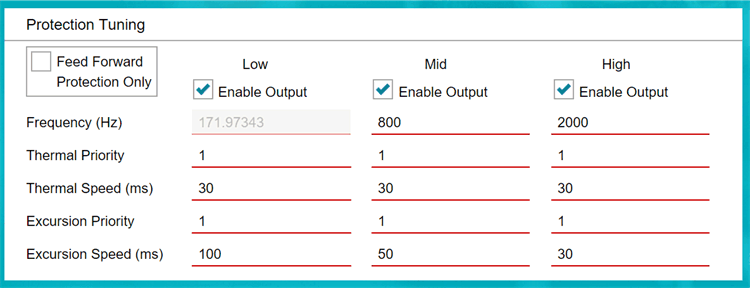SLAA936A September 2020 – March 2021 TAS2563
- Trademarks
- 1Introduction
-
2Quick Tuning Procedure
- 2.1 Initialize Tuning
- 2.2 Flatten Protection
- 2.3 Frequency Response Matching
- 2.4 Microphone Setup
- 2.5 Record Reference Device Response
- 2.6 Set Input Gain
- 2.7 Equalizer
- 2.8 Dynamic Range Compression (DRC)
- 2.9 Smart Amp Protection
- 2.10 Speaker Protection Verification
- 2.11 System Signal Chain
- 2.12 Tuning Elements
- 2.13 PDM MIC
- 3Related Documentation
- 4Revision History
2.2 Flatten Protection
The user can only truly bypass the speaker protection section of the algorithm in one of the ROM modes and not in tuning mode. However, the tuning does require tuning mode, where the user cannot bypass excursion and thermal protection but merely avoid it. The default values for the protection tuning in PPC3 are sufficient in most cases. TI recommends a thermal and excursion priority of 1, 1, and 1.
Figure 2-1 shows an example of a flat protection tuning.
 Figure 2-1 Flat Protection
Figure 2-1 Flat Protection